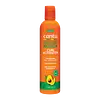What's inside
What's inside
 Key Ingredients
Key Ingredients

No key ingredients
 Benefits
Benefits

 Concerns
Concerns

 Ingredients Side-by-side
Ingredients Side-by-side

Water
Skin ConditioningPolyquaternium-46
Isobutane
Propane
Propylene Glycol
HumectantCetrimonium Chloride
AntimicrobialSodium Lauroyl Sarcosinate
CleansingOleth-20
CleansingPhenoxyethanol
PreservativeCaprylyl Glycol
EmollientEthylhexylglycerin
Skin ConditioningHexylene Glycol
EmulsifyingBenzophenone-4
UV AbsorberParfum
MaskingLinalool
PerfumingCitronellol
PerfumingHydroxycitronellal
PerfumingWater
Skin ConditioningGlycerin
HumectantCetearyl Alcohol
EmollientPanthenol
Skin ConditioningPersea Gratissima Oil
Skin ConditioningButyrospermum Parkii Butter
Skin ConditioningStearyl Alcohol
EmollientCetyl Alcohol
EmollientPolyquaternium-10
Parfum
MaskingBehentrimonium Methosulfate
Phenoxyethanol
PreservativePolysorbate 60
EmulsifyingGlycine Soja Oil
EmollientPolyquaternium-11
Olea Europaea Fruit Oil
MaskingLinalool
PerfumingHexyl Cinnamal
PerfumingEthylhexylglycerin
Skin ConditioningCanola Oil
EmollientBenzyl Salicylate
PerfumingCitric Acid
BufferingSilk Amino Acids
HumectantGeraniol
PerfumingCaprylyl Glycol
EmollientSodium Benzoate
MaskingBenzyl Alcohol
PerfumingHelianthus Annuus Seed Oil
EmollientLecithin
EmollientAscorbyl Palmitate
AntioxidantArgania Spinosa Kernel Oil
EmollientCocos Nucifera Oil
MaskingDaucus Carota Sativa Seed Oil
EmollientMacadamia Integrifolia Seed Oil
Skin ConditioningMangifera Indica Seed Butter
Skin ConditioningMangifera Indica Seed Oil
EmollientMelia Azadirachta Seed Oil
EmollientPrunus Amygdalus Dulcis Oil
Skin ConditioningSimmondsia Chinensis Seed Oil
EmollientVitis Vinifera Seed Oil
EmollientTocopherol
AntioxidantAloe Barbadensis Leaf Juice
Skin ConditioningMacrocystis Pyrifera Extract
Skin ConditioningSalvia Officinalis Leaf Extract
CleansingUrtica Dioica Leaf Extract
Skin ConditioningLonicera Caprifolium Extract
AstringentVitis Vinifera Seed Extract
AntimicrobialPotassium Sorbate
PreservativeHydrolyzed Silk
HumectantWater, Glycerin, Cetearyl Alcohol, Panthenol, Persea Gratissima Oil, Butyrospermum Parkii Butter, Stearyl Alcohol, Cetyl Alcohol, Polyquaternium-10, Parfum, Behentrimonium Methosulfate, Phenoxyethanol, Polysorbate 60, Glycine Soja Oil, Polyquaternium-11, Olea Europaea Fruit Oil, Linalool, Hexyl Cinnamal, Ethylhexylglycerin, Canola Oil, Benzyl Salicylate, Citric Acid, Silk Amino Acids, Geraniol, Caprylyl Glycol, Sodium Benzoate, Benzyl Alcohol, Helianthus Annuus Seed Oil, Lecithin, Ascorbyl Palmitate, Argania Spinosa Kernel Oil, Cocos Nucifera Oil, Daucus Carota Sativa Seed Oil, Macadamia Integrifolia Seed Oil, Mangifera Indica Seed Butter, Mangifera Indica Seed Oil, Melia Azadirachta Seed Oil, Prunus Amygdalus Dulcis Oil, Simmondsia Chinensis Seed Oil, Vitis Vinifera Seed Oil, Tocopherol, Aloe Barbadensis Leaf Juice, Macrocystis Pyrifera Extract, Salvia Officinalis Leaf Extract, Urtica Dioica Leaf Extract, Lonicera Caprifolium Extract, Vitis Vinifera Seed Extract, Potassium Sorbate, Hydrolyzed Silk
 Reviews
Reviews

Ingredients Explained
These ingredients are found in both products.
Ingredients higher up in an ingredient list are typically present in a larger amount.
Caprylyl Glycol is a humectant and emollient, meaning it attracts and preserves moisture.
It is a common ingredient in many products, especially those designed to hydrate skin. The primary benefits are retaining moisture, skin softening, and promoting a healthy skin barrier.
Though Caprylyl Glycol is an alcohol derived from fatty acids, it is not the kind that can dry out skin.
This ingredient is also used as a preservative to extend the life of products. It has slight antimicrobial properties.
Learn more about Caprylyl GlycolEthylhexylglycerin (we can't pronounce this either) is commonly used as a preservative and skin softener. It is derived from glyceryl.
You might see Ethylhexylglycerin often paired with other preservatives such as phenoxyethanol. Ethylhexylglycerin has been found to increase the effectiveness of these other preservatives.
Linalool is a fragrance and helps add scent to products. It's derived from common plants such as cinnamon, mint, citrus, and lavender.
Like Limonene, this ingredient oxidizes when exposed to air. Oxidized linalool can cause allergies and skin sensitivity.
This ingredient has a scent that is floral, spicy tropical, and citrus-like.
Learn more about LinaloolParfum is a catch-all term for an ingredient or more that is used to give a scent to products.
Also called "fragrance", this ingredient can be a blend of hundreds of chemicals or plant oils. This means every product with "fragrance" or "parfum" in the ingredients list is a different mixture.
For instance, Habanolide is a proprietary trade name for a specific aroma chemical. When used as a fragrance ingredient in cosmetics, most aroma chemicals fall under the broad labeling category of “FRAGRANCE” or “PARFUM” according to EU and US regulations.
The term 'parfum' or 'fragrance' is not regulated in many countries. In many cases, it is up to the brand to define this term.
For instance, many brands choose to label themselves as "fragrance-free" because they are not using synthetic fragrances. However, their products may still contain ingredients such as essential oils that are considered a fragrance by INCI standards.
One example is Calendula flower extract. Calendula is an essential oil that still imparts a scent or 'fragrance'.
Depending on the blend, the ingredients in the mixture can cause allergies and sensitivities on the skin. Some ingredients that are known EU allergens include linalool and citronellol.
Parfum can also be used to mask or cover an unpleasant scent.
The bottom line is: not all fragrances/parfum/ingredients are created equally. If you are worried about fragrances, we recommend taking a closer look at an ingredient. And of course, we always recommend speaking with a professional.
Learn more about ParfumPhenoxyethanol is a preservative that has germicide, antimicrobial, and aromatic properties. Studies show that phenoxyethanol can prevent microbial growth. By itself, it has a scent that is similar to that of a rose.
It's often used in formulations along with Caprylyl Glycol to preserve the shelf life of products.
Water. It's the most common cosmetic ingredient of all. You'll usually see it at the top of ingredient lists, meaning that it makes up the largest part of the product.
So why is it so popular? Water most often acts as a solvent - this means that it helps dissolve other ingredients into the formulation.
You'll also recognize water as that liquid we all need to stay alive. If you see this, drink a glass of water. Stay hydrated!
Learn more about Water